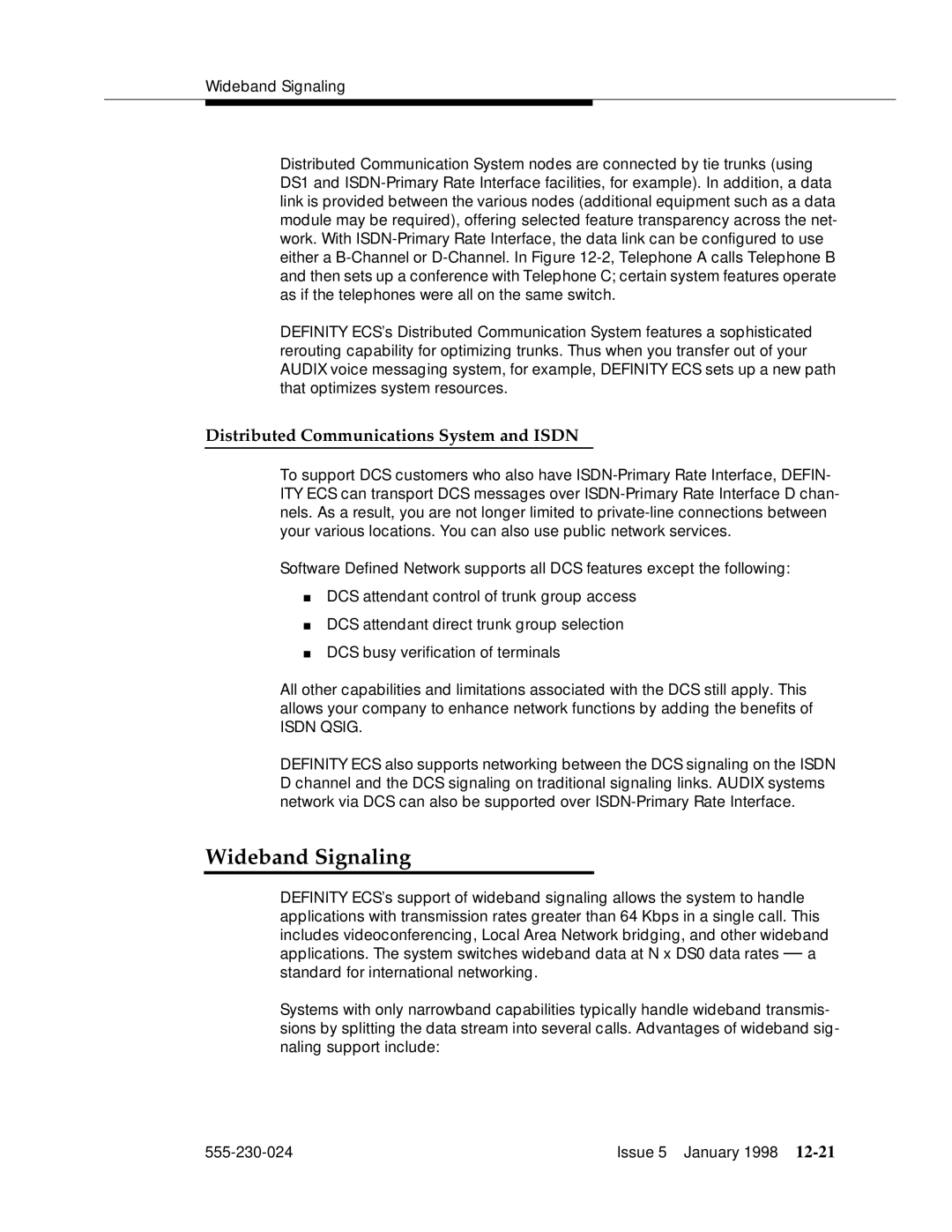
Wideband Signaling
Distributed Communication System nodes are connected by tie trunks (using DS1 and
DEFINITY ECS’s Distributed Communication System features a sophisticated rerouting capability for optimizing trunks. Thus when you transfer out of your AUDIX voice messaging system, for example, DEFINITY ECS sets up a new path that optimizes system resources.
Distributed Communications System and ISDN
To support DCS customers who also have
Software Defined Network supports all DCS features except the following:
■DCS attendant control of trunk group access
■DCS attendant direct trunk group selection
■DCS busy verification of terminals
All other capabilities and limitations associated with the DCS still apply. This allows your company to enhance network functions by adding the benefits of
ISDN QSIG.
DEFINITY ECS also supports networking between the DCS signaling on the ISDN D channel and the DCS signaling on traditional signaling links. AUDIX systems network via DCS can also be supported over
Wideband Signaling
DEFINITY ECS’s support of wideband signaling allows the system to handle applications with transmission rates greater than 64 Kbps in a single call. This includes videoconferencing, Local Area Network bridging, and other wideband applications. The system switches wideband data at N x DS0 data rates — a standard for international networking.
Systems with only narrowband capabilities typically handle wideband transmis- sions by splitting the data stream into several calls. Advantages of wideband sig- naling support include:
Issue 5 January 1998 |
